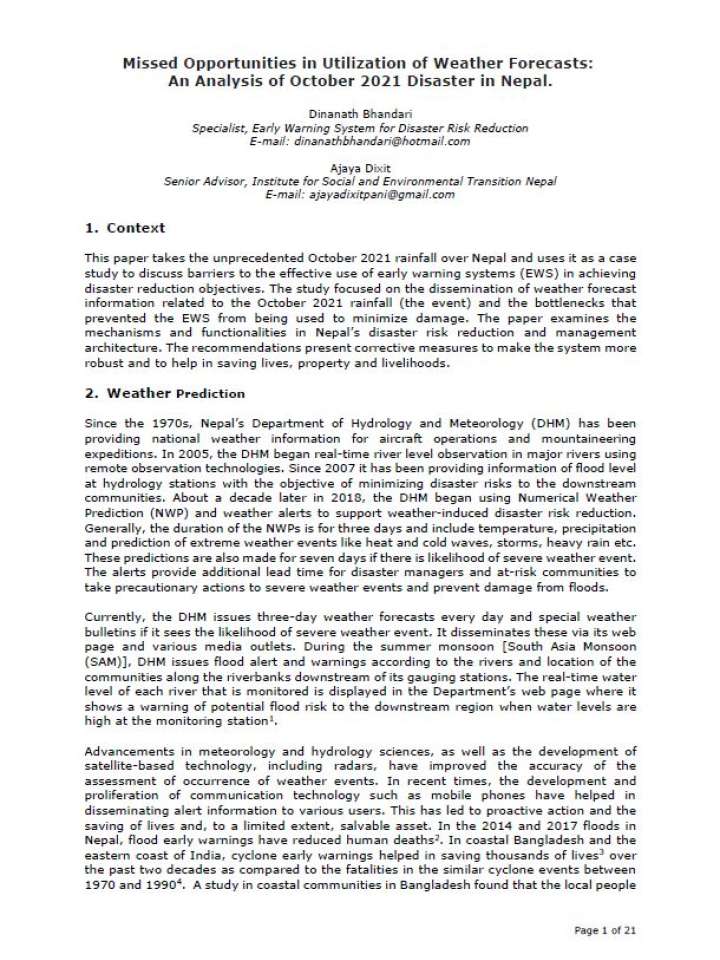Missed opportunities in utilization of weather forecasts: an analysis of October 2021 disaster in Nepal
This paper uses the unprecedented October 2021 rainfall over Nepal as a case study to discuss the barriers to the effective use of the early warning system (EWS) in achieving disaster mitigation objectives. It focuses on the dissemination of weather information of that event and the bottlenecks that prevented it from being used to minimize damage. In doing so, the paper examines the mechanisms and functionalities in Nepal’s disaster risk reduction and management architecture.
The recommendations present corrective measures that would make the system more robust and help in saving lives, property, and livelihoods. According to the authors, Nepal's Department of Hydrology and Meteorology (DHM) must continue to build its capacities and increase the forecasting lead time from the present three days to a week. It is also important to recognize that there are different types of users who access and use information differently. Therefore, efforts must be made to tailor messages in a language that different users understand. While messages are foundational, whithout appropriate advisories to help users take preventive actions, they become meaningless.
Explore further
